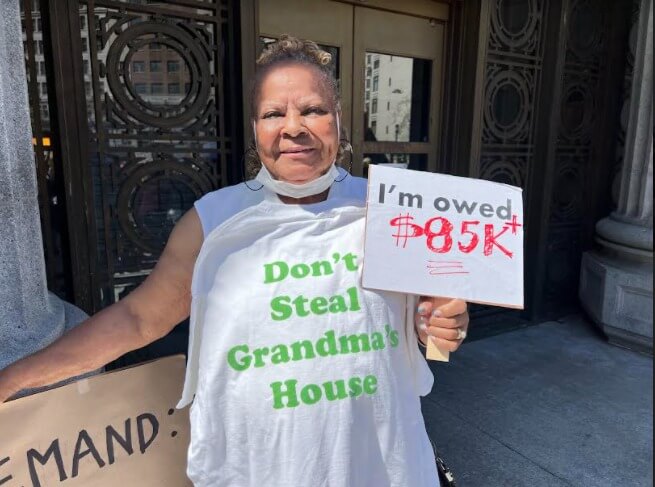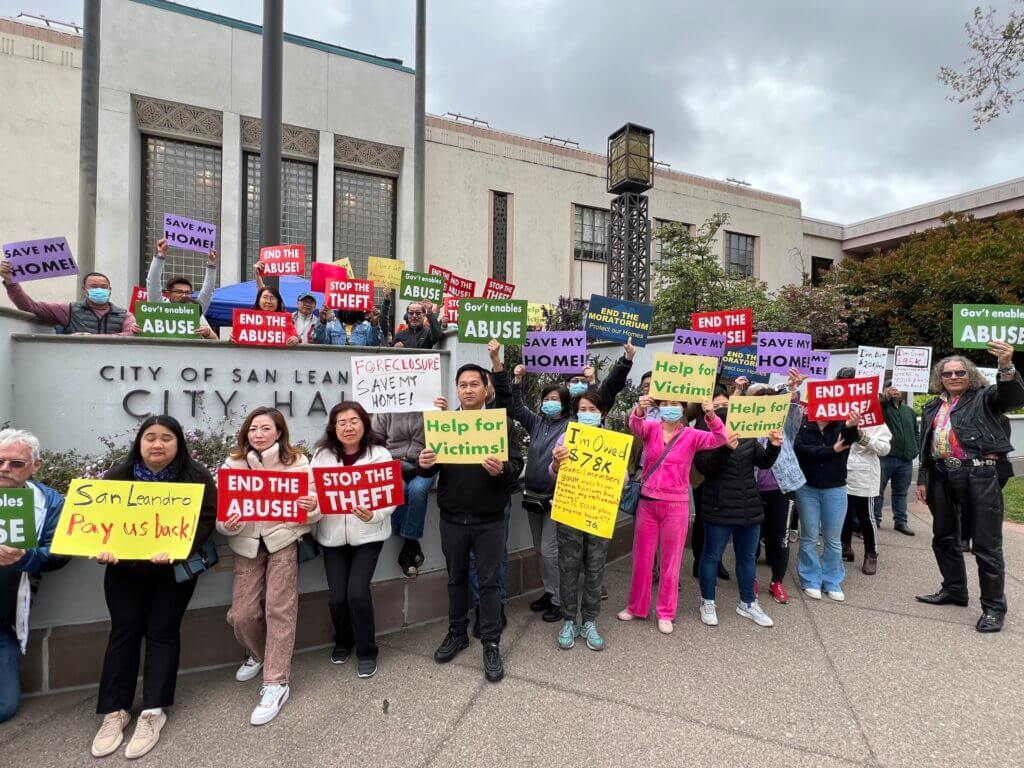IN-DEPTH
The orderly wind-down of eviction moratoriums throughout Alameda County. Or shall we say disorderly?
![]()
Finally, COVID-era eviction bans are winding down, but not without a patchwork of local rules, specific dates to keep in mind, specialized notice requirements, and several other nuances best journeyed with proper counsel.
Editorial note: The State of Emergency in Alameda County ended on February 28th at 11:59 p,m. The county's Eviction Moratorium says that it shall end "60 days after the county's State of Emergency ends." This means the Eviction Moratorium will end on April 29, 2023, at 11:59 p.m. ***This end date does not impact Berkeley, Oakland, and San Leandro as those cities have their own eviction moratoria.

Before COVID reared its ugly head, our office would typically field calls from worried housing providers who were owed one, two, or perhaps three months of rent. Every now and then, however, we would encounter clients who were owed tens of thousands of dollars in rent. In these cases, the first thought that crossed our minds was, "Why have you been sleeping behind the wheel so long?"
Fast forward to today and it is commonplace for tenants to owe tens of thousands of dollars in rent debt, some with a genuine hardship and others who are gainfully employed with the means of paying rent but refused to pay simply because they were shielded by eviction moratoriums.
In some cases, well-to-do tenants went to work and came back from the workplace with a shiny new car but didn't deign to pay the rent because they were not obligated to do so under COVID-era eviction protections.
Living rent-free, of course, has been the bane of housing providers. This gaping lack of income is especially detrimental to mom-and-pop landlords who have lost their life savings, became disabled by stress, and have had their properties on the brink of foreclosure. Fortunately, however, our community of housing providers has mobilized and their many harrowing stories have been heard by policymakers.
![]()
The statewide eviction process
Except for some additional notice requirements, the choreographed steps of California's unlawful detainer (eviction) process have fundamentally remained unchanged. The finality is a trial or a settlement to transition the tenant out of the rental unit.
In a pre-pandemic world, the typical timeframe to accomplish the goal of a vacancy was 90-120 days, sometimes shorter, but there is no date certain. The biggest variable is always which attorney the tenant retains and how hard they fight.
Of course, the pandemic disrupted this rhythmic process, and the courts were ground to a halt. Except for the most egregious cases where there was an imminent threat to health and safety, we were unable to obtain judgments.
Theories for eviction, up until now, have been limited.
For example, permanently removing rental unit(s) from the market through the Ellis Act is a drastic decision that comes with a host of statutory obligations. Another reason is compliance with a government order, which is not ideal because it means the building has been burned down to the ground or is unfit for human habitation.
Rather than looking in the rearview mirror, let's turn the page and look forward to the wind-down of moratoria.
Before we do, let us preface it that the "sweet spot" of 90-120 days to effectuate an eviction may be elongated because the number of unlawful detainer actions may exceed the number of court personnel able to handle a deluge of filings. The courts are ramping up for it, but don't expect immediate gratification.
With the courts' lack of bandwidth, patience remains the order of the day. Once a judgment is obtained, we can also expect sheriffs to be delayed in physically removing tenants, as well.
Our office expects housing providers we represent to be somewhat frustrated but we want to point out that we have little control over all of the variables.

It's been said that cypress trees do not grow in each other's shadows.
As proud East Bay residents with offices in both San Francisco and Oakland, we were elated to witness the phenomenal growth of Oakland and neighboring cities as they emerged from the shadow of San Francisco and became a force in their own right.
Yet growing pains have called for increased tenant protections. While San Francisco was once considered the main bastion of onerous regulations anywhere, it can be argued that Oakland has uncrowned San Francisco as the home to even more stringent tenant protections.
Sitting on Oakland's City Council has been a trio of the ideological vanguard of policymakers who are beholden to tenant advocacy groups and stake their political future on wooing their continued support. The logic for continuing COVID-era protections, however, has collapsed.
Aside from the more moderate Oakland council members who called for the end of the city's archaic eviction moratorium. even hardcore tenants' advocates were dumbfounded to explain why the eviction moratorium should not be ended and was hard-pressed to explain why landlords should not be paid in exchange for providing housing.
This notion that housing providers need rental income as the COVID-19 health crisis was declared over became increasingly hard to dispute, even by militant tenants' advocates.
Although there was a transition period initially floated, Oakland City Council came up with a hard date of July 15th to end all moratoria.
Key dates in Oakland

Through July 14, 2023
Eviction moratorium remains in place (Imminent threats or removal of the unit pursuant to the Ellis Act)

July 15, 2023
Eviction moratorium and late fee moratorium expire. Standard 3-day notices to demand rent can resume.

July 1, 2024
The rent increase moratorium ends.
Let’s get our books in order, document correspondence, and take inventory of our tenant ledgers in order to prepare for these key dates.

Additional, permanent protections ushered in by Oakland City Council
At its April 18 meeting, council members placed additional, concerning guardrails in place that in our view invites a judicial challenge because it tampers with state law.
Housing providers cannot evict when the amount of rent demanded is less than one month of fair market rent for a unit of equivalent size in the Oakland-Fremont metro area.
Who is the arbiter of what is a "fair" market rate? That is left up to HUD.
Example: Fair market rent for a 1-bedroom unit is $1,969. The tenant's rent is $900 per month. Assuming they pay nothing, they won't exceed the $1,969 until after the beginning of the third month after the rent becomes due.
![]()
An unnecessary, duplicative just cause added.
Non-payment of rent is one thing. But what about other breaches of the lease perpetrated by Oakland renters?
On top of the new requirement for the tenant to reach a threshold of debt in order to commence an eviction, there is another rule that landlords must demonstrate that there is a "substantial" violation of a material term of the lease, and the material term must be reasonable, legal, and was accepted in writing by the tenant.
This was ushered in because of fear of tenants being displaced because of frivolous reasons. Ultimately, it will be up to a judge or a jury to sort out what is a material, reasonable, or legal term.
At first glance, this is not too alarming because we always recommend that a breach of the lease be significant, but what makes us uneasy is that someone else will now be the arbiter of what rises to the level of removing a problematic tenant.
Housing providers and renters enter into a legally binding contract and the landlord expects to enforce the covenants of the lease. This is well established in contract law, but now, we have a new standard to prove. It must be substantial and material.
Under an earlier iteration of Oakland's wind-down of its eviction moratorium, landlords must prove that "substantial, actual damage" was suffered.
The last-minute tweaks removed this clause, but the effect remains the same. Someone in a judge's robe or a juror will have to gauge whether a breach of the lease is egregious enough for the tenant to be removed.
Never mind the fact that the renter violated any number of contractual obligations like unauthorized pets, subletting, playing loud music at all hours of the night, accumulating garbage that attracts rodents, and other lease violations.
After having proved a breach of the lease, the seriousness of the offense must now be weighed.
We do not see this as a major impediment if you work with Bornstein Law. Ordinarily, we would have an ironclad lease and eviction is used as a last resort. Ordinarily, eviction actions we commence are for violations that are substantial and material.
Nonetheless, we find Oakland's clause to be a slippery slope as lawmakers meddle further into agreements between private parties.
While we take exceptions to these amendments to existing laws governing tenant protections in Oakland, we have to be aware of them and comply with this new regulatory regime.

Berkeley's eviction moratorium has been extended past the state and local state of emergency and will expire in tiers with an end date of August 31.
While Oakland put a hard date of July 14 for the expiration date of its eviction ban, Berkeley policymakers chose to phase out its COVID-era tenant protections.
Most notably, beginning May 1, housing providers can resume serving standard 3-day notices to demand rent for rent due on or after that date.
We caution, however, that the tenant can assert a COVID-related hardship and the bar is low - a one-page document will suffice. You can obtain the declaration here, and remember that a 3-day notice demanding must be accompanied by this form obtainable on the Rent Board's website.

The choreographed steps in winding down Berkeley's eviction moratorium - here are some key dates.
March 17, 2020 - April 30, 2023 ("Covered Period")
The tenant can never be evicted for nonpayment of rent accrued during the duration of the moratorium. This involves rent owed from March 17, 2020, through April 30, 2023.
May 1, 2023 - August 31, 2023 ("Transition Period")
Tenants have the rhythmic obligation to pay rent but cannot be evicted when a COVID-related financial hardship is declared through written notification. Three--day notices to demand rent can be served, accompanied by a form allowing the tenant to assert a COVID-related hardship occurred during the Covered Period. A qualifying owner can also endeavor to transition Berkeley tenants out in order to use the property as their principal place of residence, provided they only own one property and meet other requirements. It is unclear whether relative move-in evictions (RMI) can proceed on this date.
September 1, 2023 (End date)
Barring any further extension, there are no additional guardrails in place for tenants except for local ordinances when applicable.

Incorporated parts of San Leandro remain recalcitrant
Lawmakers have clung onto COVID-era tenant protections by their fingernails and have the dubious title of having the longest eviction moratorium in the country - tenants cannot be evicted for nonpayment of rent until February 15, 2024. That's right, five members of the Council want housing providers to go a total of 47 months with no rent.
The good news is that Mayor Juan Gonzales and Council Member Pete Ballew have exposed the absurdity of this outlived eviction ban and our industry partners are fervently working behind the scenes to persuade moderate members of the San Leandro City Council to put an end to the moratorium.
We are reasonably confident that more reasonable minds will prevail come May 15th when the Council reconvenes, but we have no crystal ball.
We hasten to say that unincorporated parts of San Leandro have no unique tenant protections and are in lockstep with Alameda County, where the moratoria have expired.
Additional points and concerns we have
![]()
Owners are urged not to be over-exuberant.
Although COVID-era protections are expiring, this is not the end to landlord responsibilities such as properly serving notices, providing a habitable dwelling, and a host of statutory obligations that must be followed to the letter.
While most tenants are unlikely to be familiar with all aspects of the law, there is no shortage of supremely capable tenants' attorneys who will find mistakes, even though the fact that the tenant did not pay rent is not in dispute.
Improper demand of rent debt that has accrued during certain time periods - don't do it.
When rent is owed during certain specific periods, it cannot be used as a theory for eviction but rather, this dollar amount is converted into consumer debt. Housing providers can seek a judgment in civil courts in order to recoup this debt. We point out that demanding more rent than is due is a cardinal sin that could tank an unlawful detainer action.
There are vocal calls to make landlords "whole" with governmental funds to pay for unpaid rent and while there are proposals floating, there is nothing concrete yet. While our office has been able to secure third-party funds in San Francisco, there is a void to fill in Alameda County - the well has run dry.
Cleaning up mistakes made during the pandemic.
Many housing providers did not follow carefully prescribed rules. With the assistance of Bornstein Law, it is urged that landlords go back in time to identify mistakes that may come back to haunt us.

Other issues abound
At the outset of the pandemic, it was confusing to hopscotch from one set of tenant protections to the next and rest assured, the wind-down of these protections will be equally untidy. To make sense of it all, contact the firm built for rental housing providers and the professionals who serve them.

